How to make a nutrient-dense Prebiotic and Probiotic Macro Bowls with spaghetti squash, mixed greens, sauerkraut, avocado, and more to restore digestive balance and and build a healthy gut.
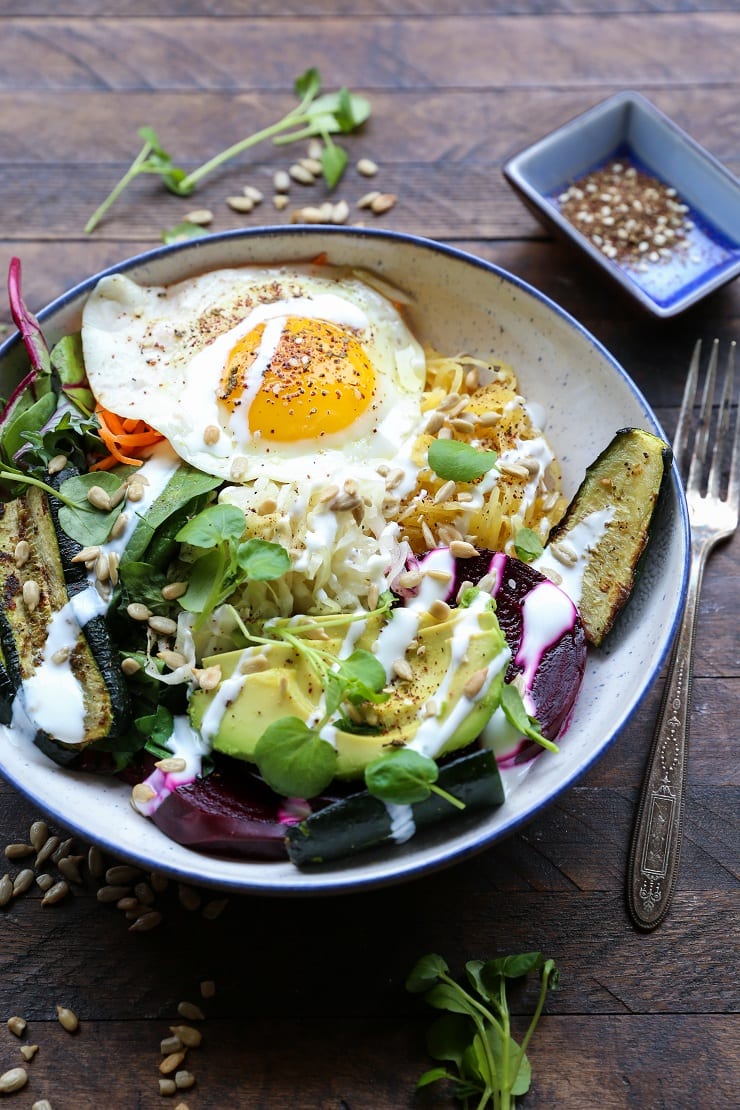
While the topic of gut health is overwhelmingly extensive, and {{disclaimer}} I’m not a medical professional, I thought I’d give you a little taste of the type of foods I eat regularly to maintain digestive balance.
The purpose of this post is to offer a meal concept, and a recipe to ideally make your digestive system swoon.
If I were to sum up everything I’ve learned about digestive health into one single piece of advice, it would be to feed your good bacteria, not your bad bacteria.
What feeds bad bacteria?
Foods high in sugar (this includes natural sweeteners!), starches, processed foods, too many grains (in particular, processed, and/or bleached grains or carbohydrates).
What feeds good bacteria?
Natural whole foods, particularly raw vegetables – in essence, dietary fiber. We should be aiming for a largely plant-based diet, along with lean protein and healthy fat for optimal energy and nutrient absorption.
So let’s dive into food that will support, grow, and nourish the peaceful bacteria in your gut while creating an environment that is unfavorable for bad bacteria to grow. What we need are both prebiotics and probiotics, both of which can be found abundantly in nature. What are they and how do we get them? Lettuce discuss.
What Are Prebiotics?
Prebiotics are food-based compounds that provide nourishment to probiotics.
They come in the form of complex carbohydrates or polysaccharides, which are a pure form of dietary fiber. When prebiotics enter the colon, they are broken down (essentially fermented) by bacteria, which enables them to reproduce. Essentially, probiotics need prebiotics in order to remain well-fed and happy.
Prebiotic foods include (you guessed it): raw vegetables and some fruit.
Foods that are particularly high in their prebiotic plant fiber are Jerusalem artichokes (a.k.a. sunchokes), chicory root, dandelion greens, garlic, onions, leeks, jicama, asparagus, wheat, and bananas.
Note if you have a FODMAP sensitivity, many of the above mentioned prebiotic foods don’t bode well with your digestive system. Choose other nutrient-dense raw and cooked vegetables, such as kale, collard greens, carrot, parsnips, butternut squash, broccoli, etc. as your source of prebiotics.
There are also prebiotic supplements available (which contain inulin), but I would highly recommend doing research on the best sources before jumping into a specific brand. I’d always recommend getting your prebiotics with raw produce rather than buying supplements if possible.
What are Probiotics?
The wonderful little creatures (helpful bacteria and yeast) that inhabit your gut that help break down food for optimal absorption, and fight pathogens and bad bacteria, thereby keeping your immune system high and your body well.
In my opinion, the best way to source your probiotics is through naturally fermented food, such as pickled vegetables, kimchi, sauerkraut, yogurt, and kefir, fermented drinks (not including alcohol) like kombucha, homebrewed ginger beer, rejuvalac, beet kvass, etc.
Hint: If you’re interested in fermenting your own beverages or making your own yogurt at home, check out my cookbook, Delicious Probiotic Drinks.
Note: if you’re intolerant to (or prefer to avoid) dairy, you can also make your own dairy-free yogurt and kefir at home, or there are now many options for store-bought non-dairy yogurt and kefir.
The reason I recommend sourcing probiotics from fermented foods verses supplements is the probiotic supplement industry is convoluted, overwhelming, and unregulated and many of the supplements don’t contain the concentration stated on the label, plus your body may need an entirely different probiotic strain than the one(s) contained in the product.
Fermented foods contain a large variety of probiotic strains, so the likelihood you’ll end up consuming a strain your body needs is much higher than if you take a shot in the dark with probiotic supplements.
Putting prebiotic and probiotic whole foods together creates for a highly nutritious – do I daresay, superfood – meal.
What is a Macro Bowl?
So…what is a macro bowl?
A macro bowl is a meal containing all the macro nutrients you need: carbs, fat, and protein.
The optimal macro bowl includes nutrient-dense foods so you get the most bang for your buck.
You’ll notice this particular recipe doesn’t include a ginormous amount of carbs. You can absolutely use brown rice or toasted whole grain bread as your carbohydrate source if you have no dietary issues with them!
There are so many options for customization here, it’s ridiculous, but to exemplify a happy tummy meal, I have included a variety of raw greens (spinach, chard, kale, beet greens), raw grated carrot, roasted beets (you can do pickled beets!), roasted zucchini, sauerkraut, spaghetti squash (<- not an amazing prebiotic, but a great source for “faux” carbs to make the meal feel satisfying), avocado, sunny side up egg, and a drizzle of kefir (I used goat milk kefir. If you’re intolerant to dairy, a dollop of your favorite non-dairy yogurt is a great replacement option).
Sound scrumptious? You can say no.
Even I, lover of vegetables, would prefer a big steamy bowl of rice, beans, cheese, and grilled chicken over a bowl like this any day.
If I’m being honest, while I do find macro bowls like this to be pleasant, I don’t find them to be sinfully succulent; however, I do find them to be extremely well-received by my digestive system. The key here is to create a bowl using your favorite nutritious foods to get the best dining experience for your own palate.
Build Your Own Macro Bowl:
Choose your adventure! (Hint: the ingredients that are italicized are very high in prebiotics)
- Leafy Greens: dandelion greens, baby spinach, chard, beet greens, kale, micro greens, butter lettuce
- Raw Vegetables: onion, jicama, carrot, peppers, cucumber, tomato,
- Roasted, Steamed, or Sautéed Vegetables: sunchokes, asparagus, garlic, beets, sweet potato, turnip, broccoli, cauliflower, zucchini, carrot, onion, leeks,
- Complex Carbohydrates, or “Faux” Carbs: sprouted brown rice (or rice of choice), quinoa, farro, spaghetti squash, cauliflower rice, beet rice, cabbage rice (see these Cabbage Rice Fajita Bowls from Making Thyme for Health for example).
- Protein: eggs, beans (black, gabanzo, kidney), grilled salmon or chicken
- Probiotic Fermented Foods: pickled beets, homemade sauerkraut (if using store-bought sauerkraut, make sure the package states it contains live probiotics), kimchi, pickled red onion
- Probiotic Sauces: kefir, Tzatziki Sauce, Fig Kombucha Vinaigrette
- Other Sauce/Spread Options for Flavor: Beet Green Pesto, Kale Pesto, Roasted Beet and Garlic Hummus
Side Note: if you have a digestive ailment, food sensitivities or intolerances, a FODMAP sensitivity, or autoimmune disease, choose foods you know your body will digest in peace.
Personal note: I try to eat meals like this regularly in order to keep my system in check, but law knows I’m not perfect and sometimes my stints of less-than-optimal eating cause my sensitive GI tract to get out of whack.
When my digestive system is in shambles, I put everything on pause and eat meals like this.
If you’re like me and have a sensitive tummy, try regularly consuming prebiotic and probiotic foods to help your insides stay happy.
So there you have it! May your gut biotics forever remain in a peaceful state.
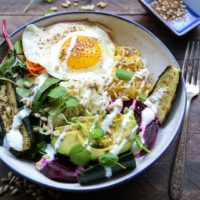
Prebiotic and Probiotic Macro Bowls
Ingredients
For the Bowls:
- 1/2 small spaghetti squash roasted
- 1 large beet roasted
- 1 large zucchini roasted
- 2.5 ounces mixed leafy greens (I used beet greens, baby spinach, and baby chard)
- 1 cup sauerkraut see note*
- 2 eggs sunny side up
- 1/2 avocado sliced
For Topping:
- 1/4 cup micro greens
- 2 tablespoons sunflower seeds
- 1/4 cup kefir
Instructions
- Divide the ingredients between two bowls and top with fresh micro greens, sunflower seeds, and a drizzle of kefir.
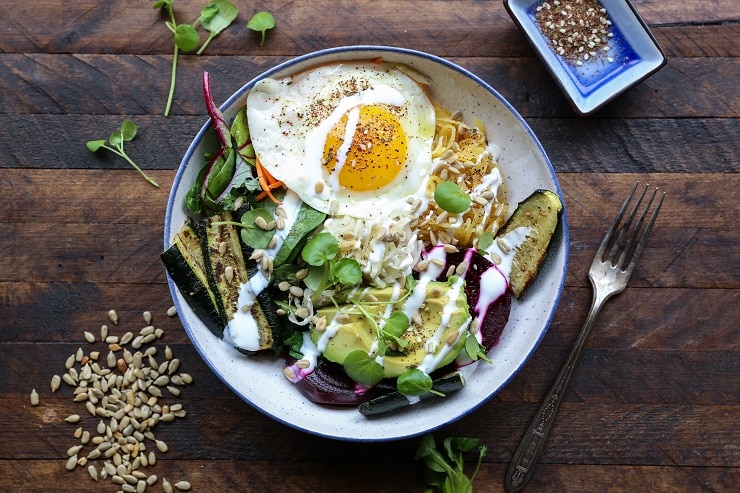
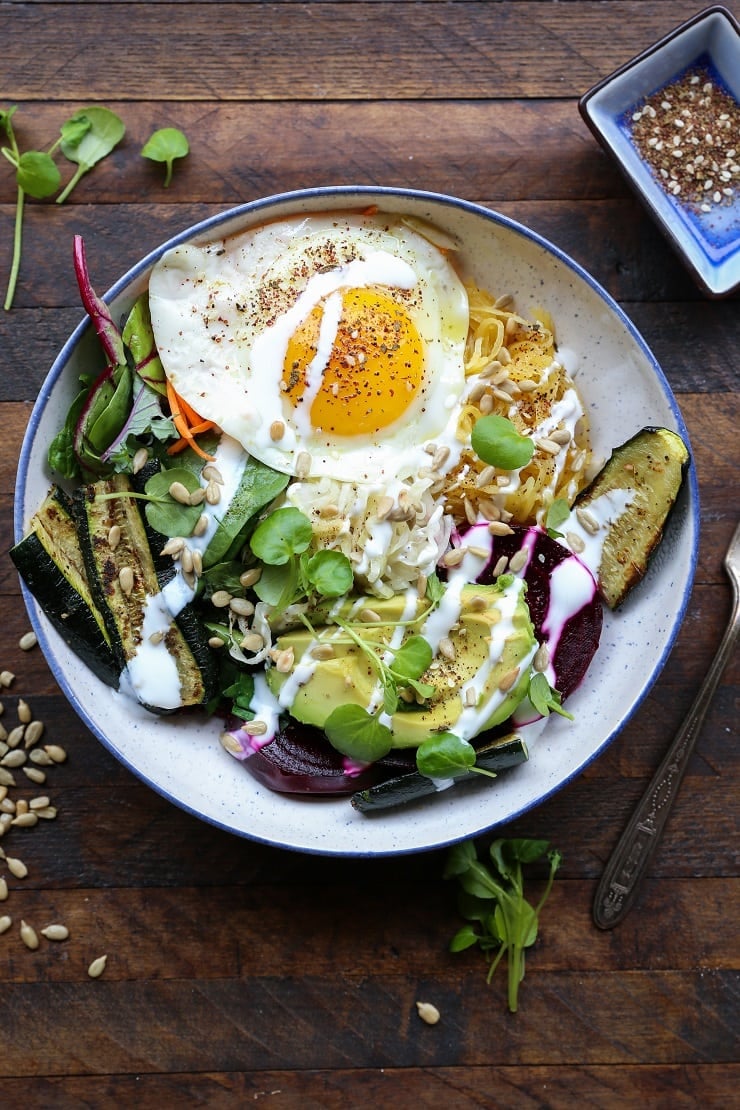

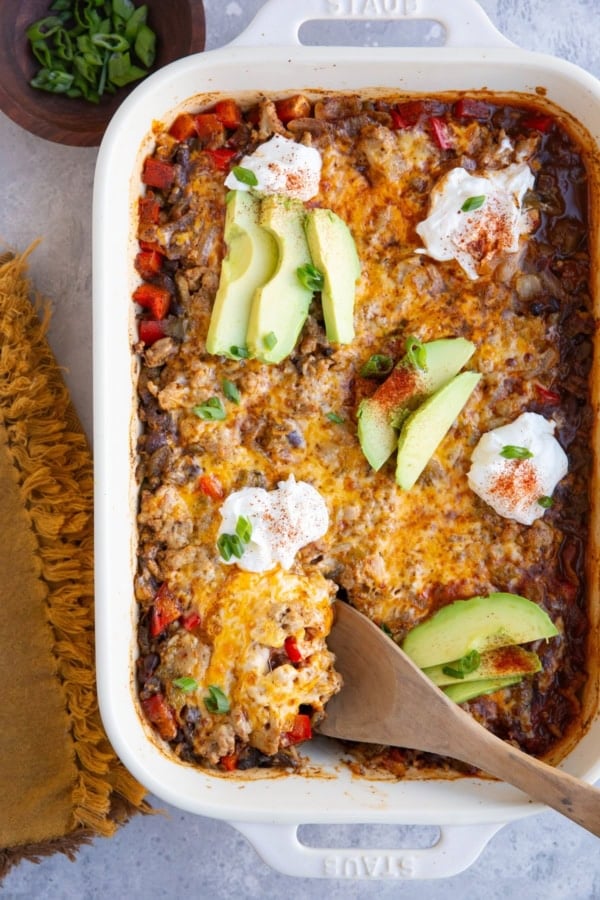
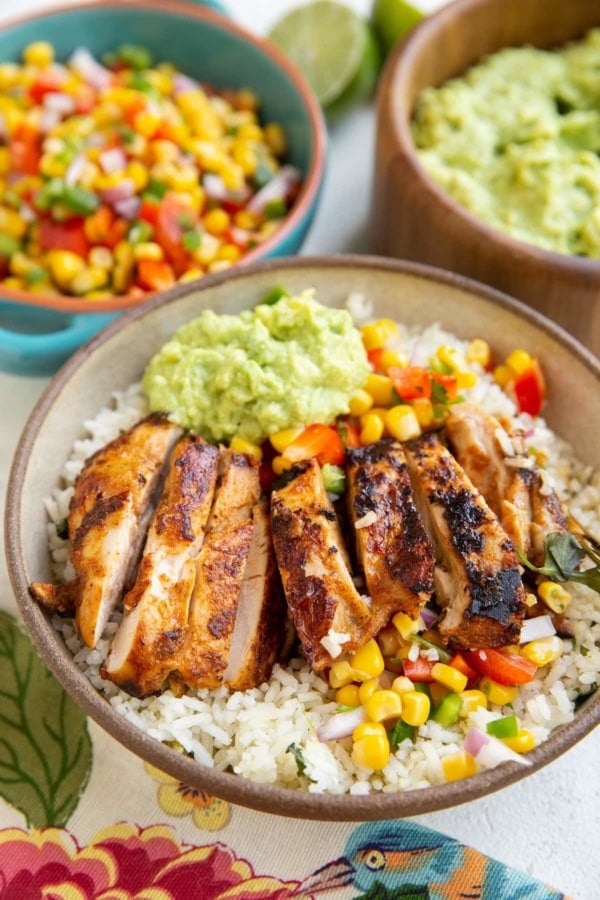
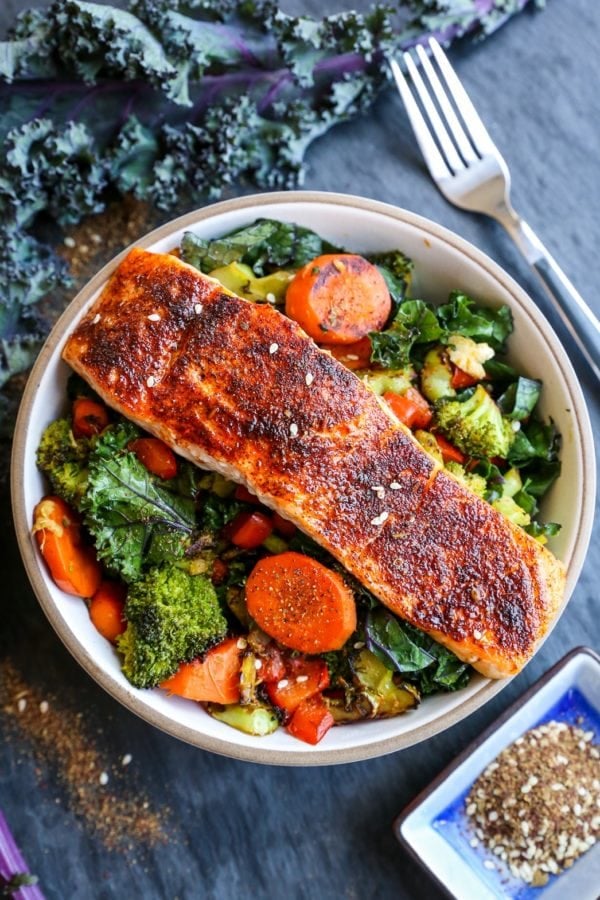
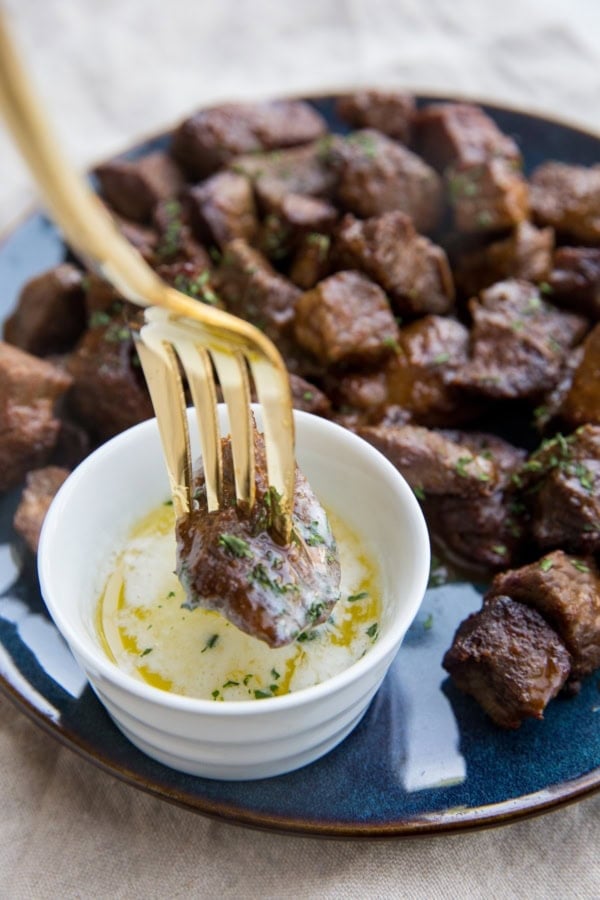









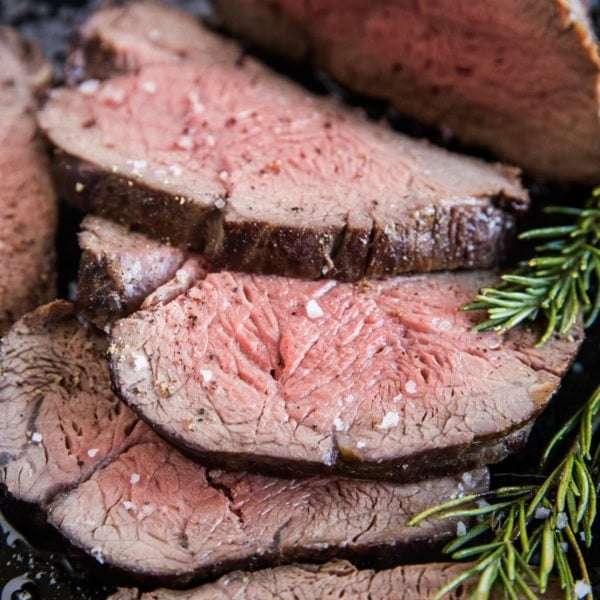
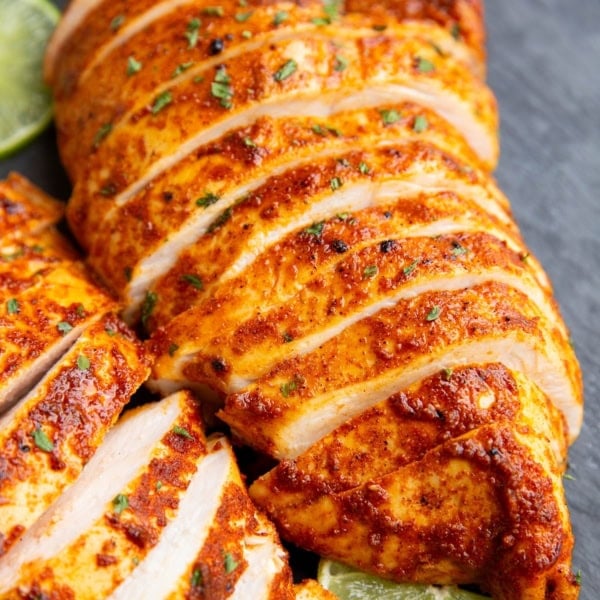
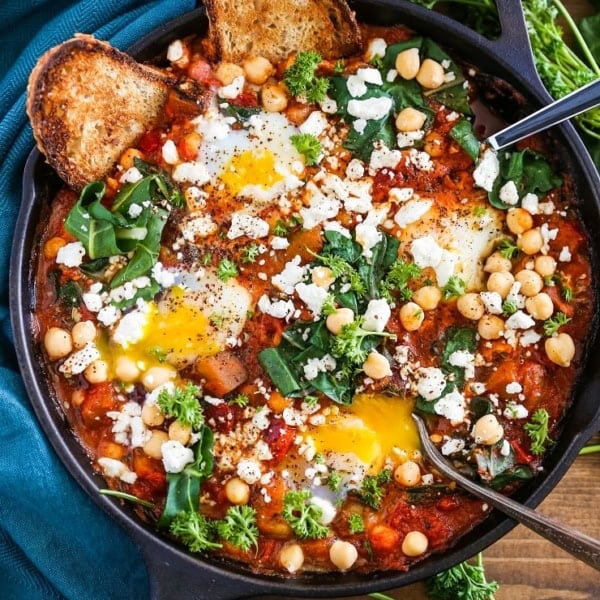
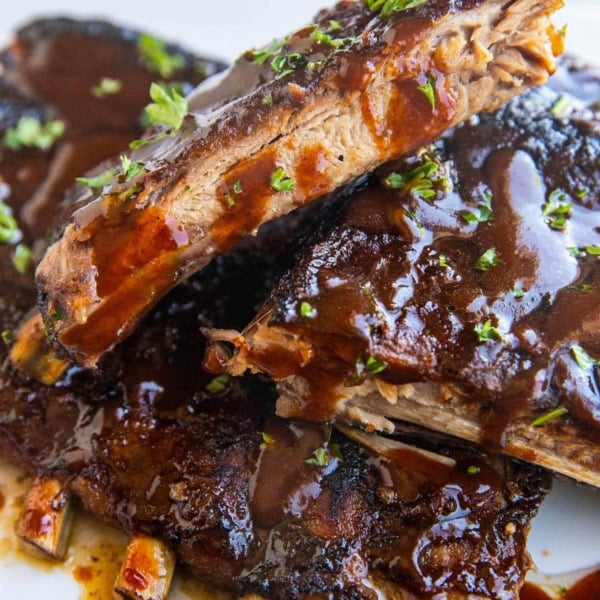
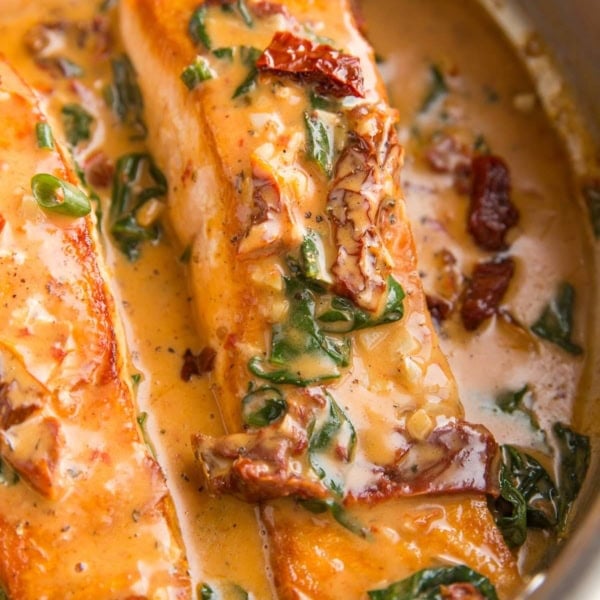
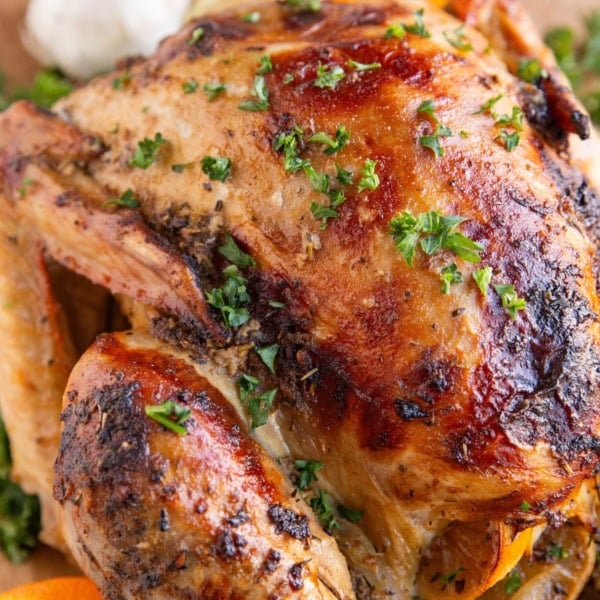
Love your post. I believe in healthy living. I have been doing more research into prebiotic and prebiotic sources. I would rather eat healthy foods than take supplements. I can’t wait to make the macro bowl today. Thank you.
Hi Lesley! Thanks so much for reaching out! I’m thrilled to hear you’re interested in the macro bowl. I think sourcing the majority of your nutrient needs from natural foods rather than supplementing through pill form is the best first line of defense as well 🙂 Enjoy!
This looks amazing!!! I can’t wait to try it this week.
How many times a day or weeks should you eat one of these bowls?
I’m super intrigued by foods that are good for the gut and it’s incredible how food can heal your digestion! I LOVE everything about this macro bowl!
I loved this post Julia – so much great info! I try to eat for my gut on a regular basis but have been a bit out of whack after a vacation earlier this month! Must make myself these bowls!
Loved reading this post- had no idea about prebiotics, and no wonder my tummy and digestive system love asparagus so much! I’m always trying to improve gut health and this was super informative 🙂 Also loved “If I’m being honest, while I do find macro bowls like this to be pleasant, I don’t find them to be sinfully succulent” because I love being healthy, but yes, who wouldn’t eat a ton of mac and cheese for every meal if they could? Luckily we have delicious meals like this that don’t feel like as much of a compromise 🙂
My thoughts exactly…I mean, I love healthful food, but when a bowl is this clean, it’s tough to jump out of my britches over it, you know? I’m so glad you found the post helpful! xo
Love the look of this gorgeous and gut-friendly bowl! So much great info here, too!
Thank you, m’dear! 😀
Gut healthy and delicious! This looks absolutely beautiful. There are so many people eliminating “carbs” from their diet right now and it’s so frustrating. There is such a misconception. I appreciate your post!
You got it! I’m glad you found it informational and thanks for your feedback!
Thank you for finally helping me understand prebiotics! I swear, science is just not my thing :). This bowl is so pretty and I love that it’s good for me too!
I hear ya, sister…I tend to have to do a tooon of research before anything sciency/medical sinks in. I’m glad you got something out of the post!
I love this post so hard! Thank you for clarifying that processed/refined carbs are the problem- not all carbs! There is an affinity for grain-free right now and it’s killing me because grains are one of the best sources of dietary fiber, as are legumes. Not to mention they’re also a great source of protein, iron and other essential vitamins and minerals.
I also feel like a lot people have problems digesting foods that are high in dietary fiber because most have not eaten that way their entire lives and neither have their close relatives. They are probably lacking a lot of that good bacteria that helps them digest it properly and if they stay away from it because of that reason, then they will never replenish them. It’s like a viscous cycle.
But I think you covered all of the bases perfectly and made it look incredibly delicious and beautiful in the process. The food styling in these pics is seriously blowing my mind. These bowls are SO pretty! <3
Xoxoxo! Thanks, m’dear! It’s funny how many opinions are swarming around regarding high protein v. low protein diets, high fat v. low fat, high carb v. low carb…it’s overwhelming to say the least! I try to take a non-opinionated approach toward nutrition and stick to the facts and the basics, and love that you are so well-researched as well. Love ya lady!
I’m glad you brought up the dietary fiber issue – I didn’t think to mention that in the post, but it’s a really great point! I wanted to go into FODMAPs as well, since some of the issue people have with digestion is related to specific types of whole foods, but I didn’t want to make the post lengthier. There’s just so much information, it’s difficult to be concise!
These macro bowls look absolutely DELICIOUS, Julia!! So beautifully photographed!!
Thanks, m’dear! They definitely made for a fun shoot 😉 <3
Thank ya, Sarah! It was one of those all-the-stars-were-aligned shoots 😉 Love it when those happen xo